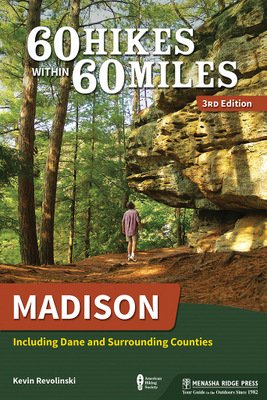Palermo: The Flower of Sicily
 “Is this your first time to Palermo?” The fellow next to me smiled but looked with masked concern at the cappuccino I was drinking at noon, a cardinal sin for Italians who consider it only a breakfast drink.
“Is this your first time to Palermo?” The fellow next to me smiled but looked with masked concern at the cappuccino I was drinking at noon, a cardinal sin for Italians who consider it only a breakfast drink.
“Yes.”
“Bravo. You will love it. It is the center of the world.”
To call Palermo the center of the world, wouldn’t be far from the truth. Like the center of a compass this is where north meets south and east meets west. World War II bombing and a long period of neglect still leaves some rough edges, but this city is now on the rise and captures much of the spirit of the “other Italy” that is Sicily.
Some remarkable cave drawings within the cliffs of nearby Mount Pelligrino indicate that Palermo was already someone’s home by the middle Neolithic period. Several millennia of inhabitants couldn’t be wrong, could they? The history of this site, however, wasn’t recorded until the 8th century B.C. when the Phoenicians, a culture adept at sailing, came all the way from the Middle East to set up a port and outpost for their expanding trade routes. They called it Ziz, meaning “flower.”
 And never has a flower been such a hybrid. The list of occupiers of this beautiful curve of land facing the Tyrrhenian Sea and backed up against the Conco d’Oro (Golden Shell) valley and the limestone shoulders of Pelligrino, reads like a hotel guest book.
And never has a flower been such a hybrid. The list of occupiers of this beautiful curve of land facing the Tyrrhenian Sea and backed up against the Conco d’Oro (Golden Shell) valley and the limestone shoulders of Pelligrino, reads like a hotel guest book.
As delightful as the mountains and valley are, the Greeks dubbed the city Panormos, meaning “all port.” They had their eyes on it for centuries and finally took possession in 276 BC, after the Carthaginians, descendents of the Phoenicians had made it into a successful center of commerce.
The Greeks, however, who had occupied much of Sicily since the 8th century as Magna Grecia (Great Greece) were no match for the rising empire of the Romans, and just over twenty years later the city again changed hands in one of histories many “negotiations,” in this case the Punic Wars.
No Italian history would be complete without a brief Goth occupation and assorted Vandal raids, and Panormos received both before the Byzantine Empire took charge in 535 AD and held the city for nearly three hundred years. Enter the Moors. These Saracen Arabs, from what is now Tunisia, converted all the Orthodox churches to mosques and renamed the port city Bal’harm. It flourished as the capital of the Emirate of Sicily and was rivaled only by Baghdad as the most beautiful city in the Muslim world.
In 1071 the Normans laid siege for five months before finally capturing it for themselves. The result, finally, was a truly cosmopolitan city, populated by Christians, Muslims and Jews from all different parts of the Mediterranean. It ranked as one of the wealthiest communities in Europe and over the centuries much of the nobility of western Sicily took up residence here.
 What does all this history and hand-changing mean to the modern traveler? A rich amalgamation of culture, food and architecture like no other. Even within single buildings one can see Gothic, Moorish, Byzantine, and Norman elements, intriguingly combined. A walk along Corso Calatafimi passes a Phoenician cemetery, Baroque churches, Roman homes, and Norman palaces. Put in a dash of Arabesque and its all there, a stew of Mediterranean history that is part of a living, breathing, bustling modern city.
What does all this history and hand-changing mean to the modern traveler? A rich amalgamation of culture, food and architecture like no other. Even within single buildings one can see Gothic, Moorish, Byzantine, and Norman elements, intriguingly combined. A walk along Corso Calatafimi passes a Phoenician cemetery, Baroque churches, Roman homes, and Norman palaces. Put in a dash of Arabesque and its all there, a stew of Mediterranean history that is part of a living, breathing, bustling modern city.
After my cappuccino I escaped down some of the narrow alleyways at the heart of town and found a labyrinth of markets. Vendors shouted out their wares as I passed: fresh fruits and vegetables, gleaming silver seafood, Italian sausage being made into links right before my eyes. Suddenly the impressive architecture became a muted background to the rainbow of produce and the gesticulations and booming voices of local shoppers. I bought some of the amazing Sicilian blood oranges and headed off for some sightseeing.
Arguably the most significant sight in Palermo—if the enormous line has anything to say about it—is the Palazzo dei Normani, the Royal Palace. The seat of Sicily’s regional government, it was constructed by the Arabs in the 9th century and then extended by the Normans. Its centerpiece is the chapel, the Cappella Palatina. Once again the styles of the isle have combined to make a masterpiece. Vivid Byzantine mosaics gleam with gold and every square inch of the walls and ceilings display likenesses of saints surrounded by the harmonious geometry of Arabesque designs. Marble columns and mosaic-covered arches support a beautiful carved wooden ceiling. I stalled as long as I could as the guards attempted to keep the hordes moving through as smoothly and quickly as possible.
 Call me morbid but I am always up for a bit of the macabre, and a trip to the catacombs of the Capuchins fit the bill. From the 1600s on into the early 20th century the monks on request mummified about 8,000 locals of certain social standing, and then mounted them along the walls like morbid puppets. The conditions in these underground chambers and the special embalming preserved faces in some cases and many of them look to be sleeping. ‘Til death do us part? Not even then. One couple chose to hold hands and stare into each other’s eye sockets for eternity. Alas, not much of the mummification took for these two and their gaping jaws seem more like eternal horrified screams. There are some married couples who might have a similar reaction to the idea.
Call me morbid but I am always up for a bit of the macabre, and a trip to the catacombs of the Capuchins fit the bill. From the 1600s on into the early 20th century the monks on request mummified about 8,000 locals of certain social standing, and then mounted them along the walls like morbid puppets. The conditions in these underground chambers and the special embalming preserved faces in some cases and many of them look to be sleeping. ‘Til death do us part? Not even then. One couple chose to hold hands and stare into each other’s eye sockets for eternity. Alas, not much of the mummification took for these two and their gaping jaws seem more like eternal horrified screams. There are some married couples who might have a similar reaction to the idea.
Just about 8 km south of town but worth the extra trip is Monreale, famous for its monastery and cathedral. William II commissioned this magnificent Norman structure in the 12th century. His grandfather Roger was behind the Cappella Palatina, and William showed no less taste. Beyond the bronze front doors, gilded mosaics of Christ and several saints cover the walls. Scenes from the Bible create a pictorial history in the central nave. As I wandered around to the small piazza behind the cathedral for a view down over Palermo and the sea, a dove dropped vertically from the sky into a patch of sunlight at my feet. Given the magnificence of the surroundings I might have believed it a miracle had it not grabbed a twig and circled back up to its nest along the parapet of the cathedral.
The sights are numerous—Qanat, the system of Arab aqueduct tunnels beneath the city, or the splendid La Zisa castle, just to name a couple—and Lo Spasimo or Teatro Massimo are recommended for performances or even just a look at the complexes themselves. But in the end, the bits of daily life are just as precious as the magnificence of cathedrals. A stroll down a narrow street beneath laundry flapping in the breeze, a passeggiata, an evening promenade, along the botanical gardens near the sea, or a stop for another after-hours cappuccino shouldn’t be missed. “Your coffee (American coffee), it is like broth,” said the bar owner, glancing at the clock and shaking his head.
 The Sicilians’ passion for football is matched only by their love of good food. The influence of Africa can be found in the spicier dishes, but worry not, there is plenty of pasta to go around. Seafood is a specialty and favorites include fresh swordfish. There are many excellent seafood restaurants, but for the setting the small village of Sferracavallo might be a good off-the-beaten-path option. The view of the Gulf of Palermo is a marvelous backdrop for a romantic meal.
The Sicilians’ passion for football is matched only by their love of good food. The influence of Africa can be found in the spicier dishes, but worry not, there is plenty of pasta to go around. Seafood is a specialty and favorites include fresh swordfish. There are many excellent seafood restaurants, but for the setting the small village of Sferracavallo might be a good off-the-beaten-path option. The view of the Gulf of Palermo is a marvelous backdrop for a romantic meal.
I decided to end my day on a sweet note: gelato. It’s the lighter Italian version of ice cream. The texture is soft and so it is served with a spatula and proprietors often sculpt the surface of the tubs beneath the glass display, a fine touch that rarely lasts long. Italians may be particular about when to eat certain things and how, but when it comes to gelato, it’s a free for all. Even in the dead of winter when cold rains blow in from the north you can find Italians out for a walk under an umbrella licking away at an icy bit of heaven. True gelato should be made fresh each day and the list of flavors can be endless. But the indecisive will take relief in the fact that typically three flavors are set alongside each other in a cup or cone. I, however, didn’t hesitate and chose the strawberry gelato with the tiny Sicilian berries in it. Every bit as rich as Palermo itself.



 ORDER YOUR COPY TODAY!
ORDER YOUR COPY TODAY! ORDER YOUR COPY TODAY!
ORDER YOUR COPY TODAY!